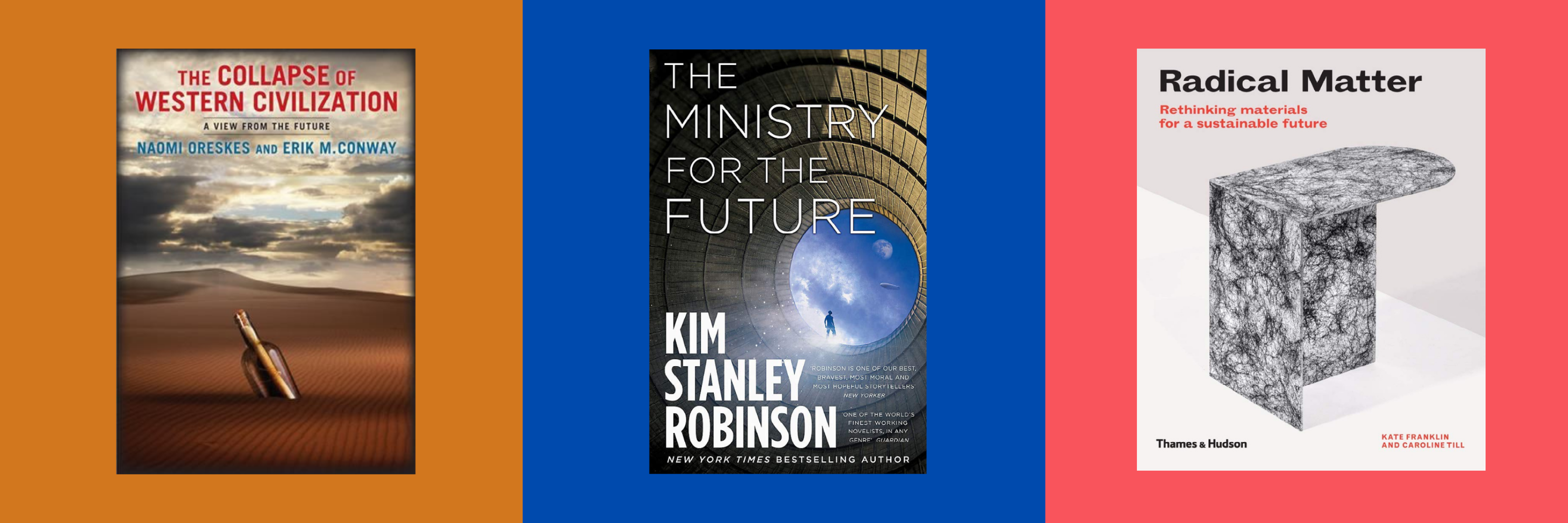In an era of high-tech and climate extremes, we are drowning in information while starving for wisdom. Architect Julia Watson imagines a design movement building on indigenous philosophy and vernacular infrastructure to generate sustainable, resilient, nature-based technology. Watson explores millennia-old human ingenuity on how to live in symbiosis with nature. We asked Watson what she will be reading this summer.

The Collapse of Western Civilization - A View from the Future by Naomi Oreskes and Erik M. Conway
We go forward to nature, not back. Science fiction writers construct an imaginary future; historians attempt to reconstruct the past. Both seek to understand today. In a View from the Future, the two genres imagine a future historian looking back on a past that is our present and (possible) future. The occasion is the end of Western culture (1540–2093); the dilemma being addressed is how we—the children of the Enlightenment—failed to act on robust information about climate change and knowledge of the damaging events that were about to unfold.
Get The Collapse of Western Civilization - A View from the Future here.

The Ministry for the Future: A Novel by Kim Stanley Robinson
Humanities impact on the planet is undeniable. We were here echos all over. Legendary science fiction author Kim Stanley Robinson creates a vision of climate change unlike any ever imagined. Established in 2025, the purpose of the new organization was simple: To advocate for the world's future generations and to protect all living creatures, present and future. It soon became known as the Ministry for the Future, and this is its story. The setting is not a desolate, post-apocalyptic world, but a future that is almost upon us - and in which we might just overcome the extraordinary challenges we face.
Get The Ministry for the Future: A Novel here.

Radical Matter - Rethinking Materials for a Sustainable Future by Kate Franklin, Caroline Till
How will we design the future? Technological and material innovation will shape and inform the choices of design methods, and manufacturing processes made by designers in the years to come. Pushing boundaries with innovative works that go beyond the notion of “sustainable design,” Radical Matter demonstrates how holistic systems of design, production, and consumption will benefit our world environmentally, socially, and economically. Ten “Big Ideas” unpack the themes that are impacting our material world through cutting-edge case studies and expert opinions: Repair Is Beautiful; Today’s Trash, Tomorrow’s Raw Material; Natural Assets; The Waste Revolution; Lessons from the Past; Co-Creation; Material Connections; Short Life Materials; Living Materials; and Future Mining.
Get Radical Matter - Rethinking Materials for a Sustainable Future here

Share your thoughts and join the technology debate!
Be the first to comment